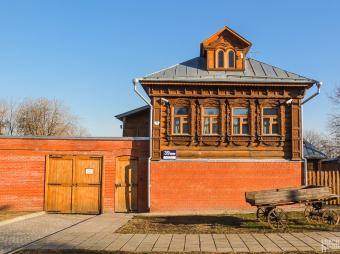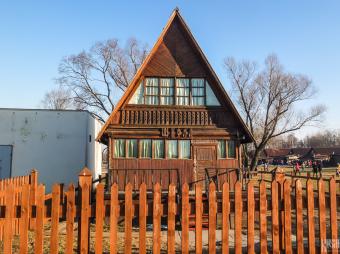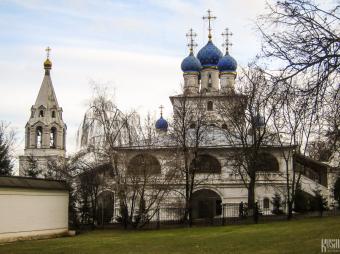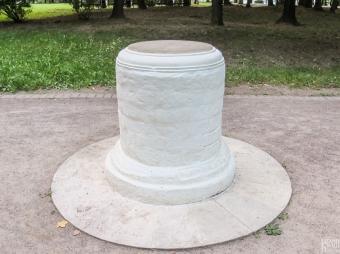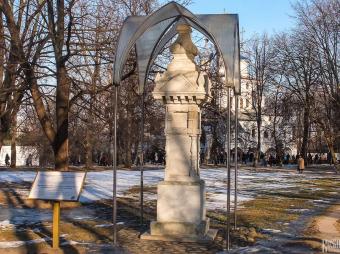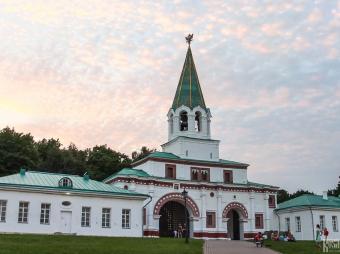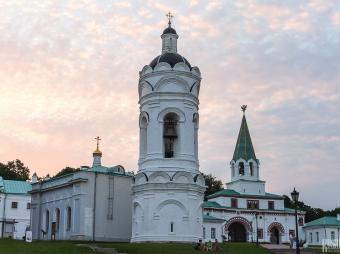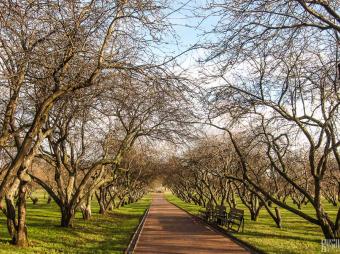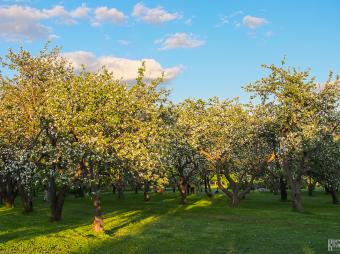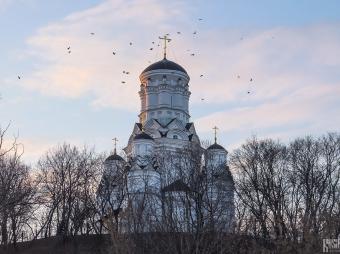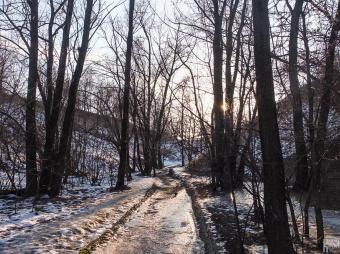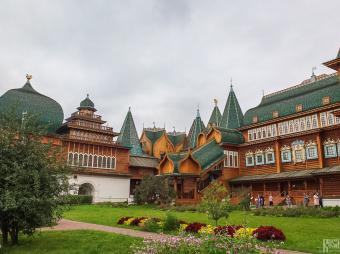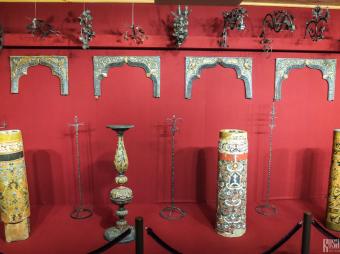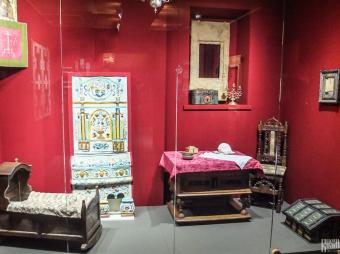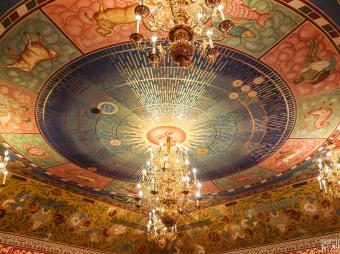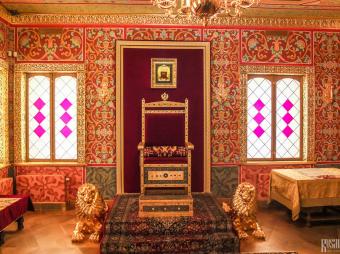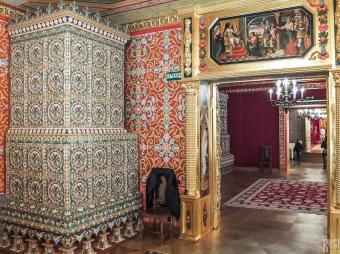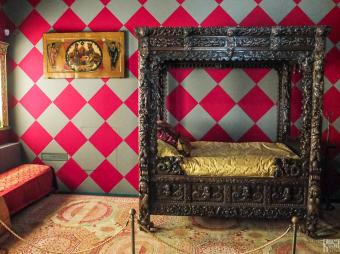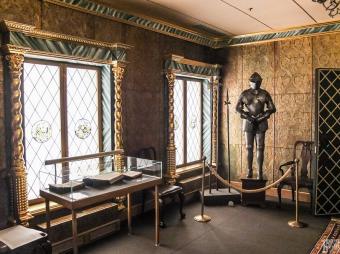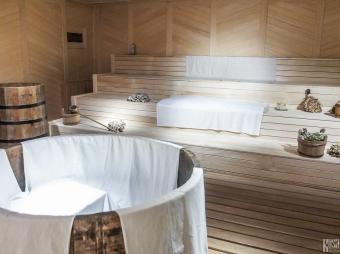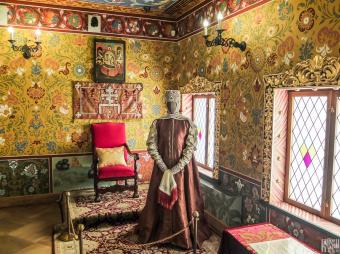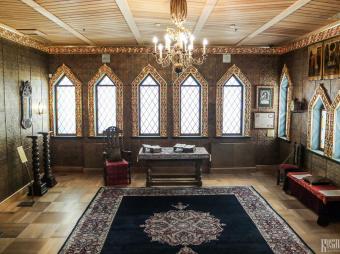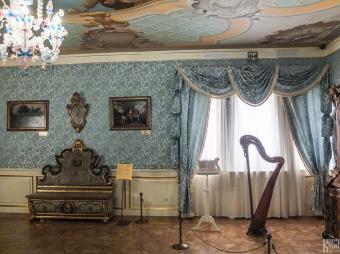Around Kolomenskoe Metro Station
Kolomenskoe Estate
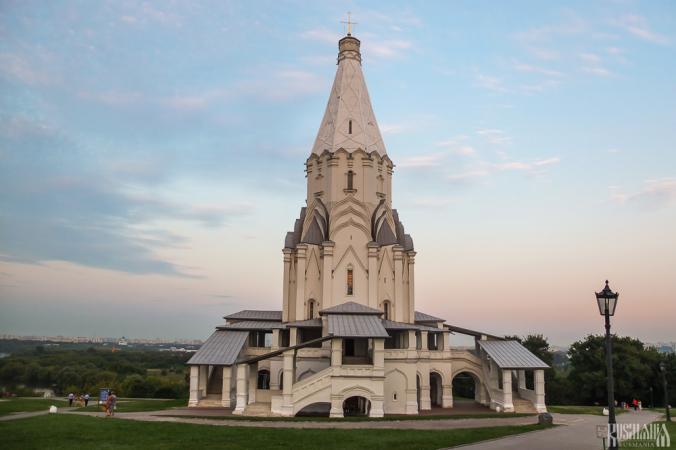
The Kolomenskoe Estate runs all the way along the right-bank of the River Moscow from Kolomenskaya to Kashirskaya metro stations and is one of the most popular sights in Moscow outside of the city centre, favoured by both locals and tourists. Historically the Kolomenskoe Estate was the location of the village (selo) of Kolomenskoe, which according to legend was founded by refugees from Kolomna fleeing the Mongol-Tatar Invasion. The village was first mentioned in 1336 in the will of Ivan Kalita and was always under the ownership of the Moscow grand princes and later the tsars. During the reign of Tsar Alexis, Kolomenskoe became a royal residence and a grand wooden palace was built here, which survived up until the time of Catherine the Great. Due to this connection, Tsar Peter the Great and other Romanovs were born here.
Today the estate is run as a museum-reserve as part of the Moscow State Unified Art, Historical, Architectural and Natural Landscape Museum-Reserve. The estate covers a very large area and you could spend most of the day here if you want to see everything, but if you are short of time the main area worth visiting in the estate is the Tsar's Court and the sights on the neighbouring Voznesenskaya Ploschad, although the modern recreation of Tsar Alexis's Palace in the very south of the Estate is also a contender. Various events, activities, concerts and fares are also held at the estate. Entrance to the territory of the estate is free of charge and there is free admission to its museums and exhibitions of the third Sunday of the month.
Although the estate has seven entrances the most commonly used one is entrance 2 which is the most obvious entrance if walking from Kolomenskaya metro station. Immediately next to the entrance is the Atrium Exhibition Hall, which holds an exhibition entitled "Masters, Techniques and the Art of Russian Building from the 14th to 19th centuries.
Russian Wooden Architecture Complex
Several examples of Russian wooden architecture were transferred from North Russia and Siberia to the north-west section of the Kolomenskoe Estate around Ulitsa Zhuzha, where a Russian Wooden Architecture Complex has been formed to better preserve the buildings.
Gateway Tower of the Nikolo-Korelsky Monastery
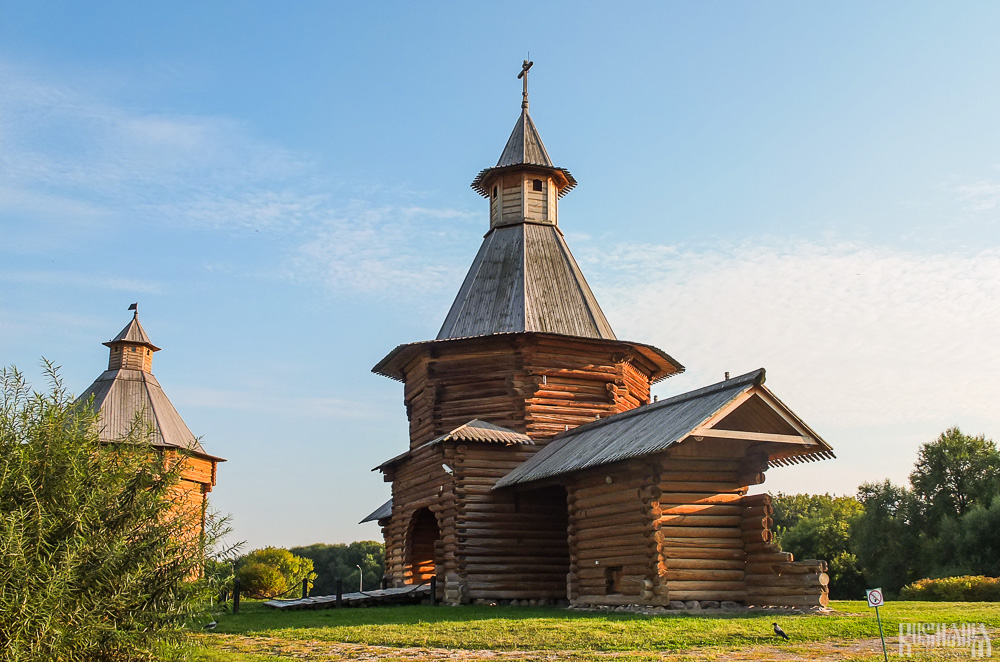
The first structure here is the Gateway Tower of the Nikolo-Korelsky Monastery. The monastery is located in Severodvinsk on the mouth of the Northern Dvina River and was first mentioned in 1419. In the late 17th century new wooden fortifications were built around the monastery, the main entrance of which was this wooden gateway tower. The tower was removed from Severodvinsk and reconstructed in Kolomenskoe in 1932 and restored in 2007.
Mokhovaya Tower of the Suma Stockade
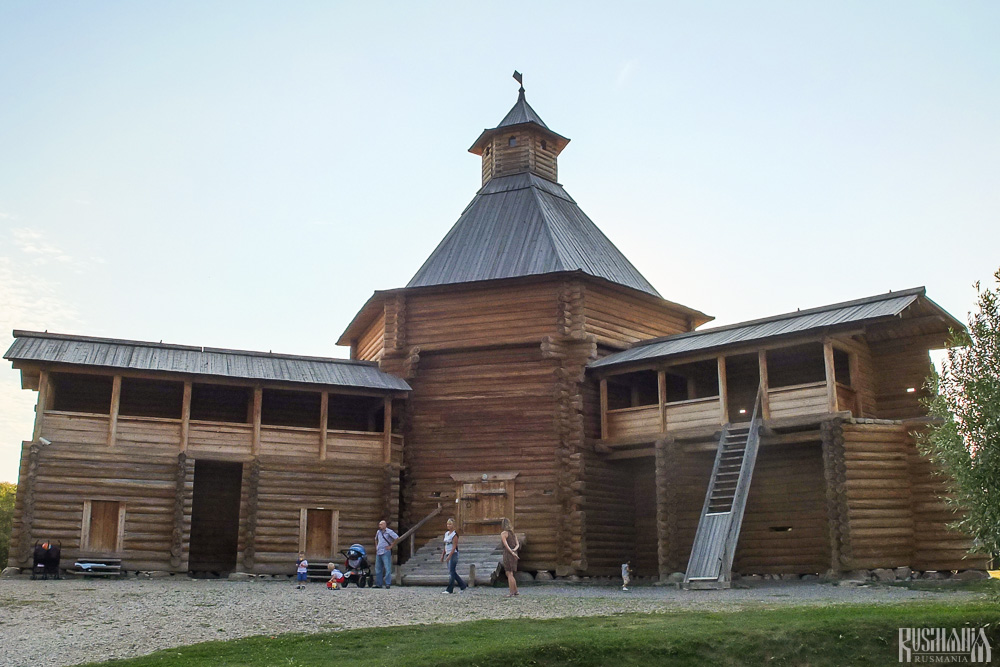
Next to the gateway tower is the Mokhovaya Tower of the Suma Stockade. The stockade ('ostrog' in Russian) was built in the 17th century on the White Sea but all that survives today is the northern-western tower which was called the Mokhovaya Tower. It was transferred to Kolomenskoe in the 1930s. The tower has an exhibit inside on the history of the Suma Stockade in particular and on historic defences in Russia's Pomorye area in general.
Tower of the Bratsk Stockade
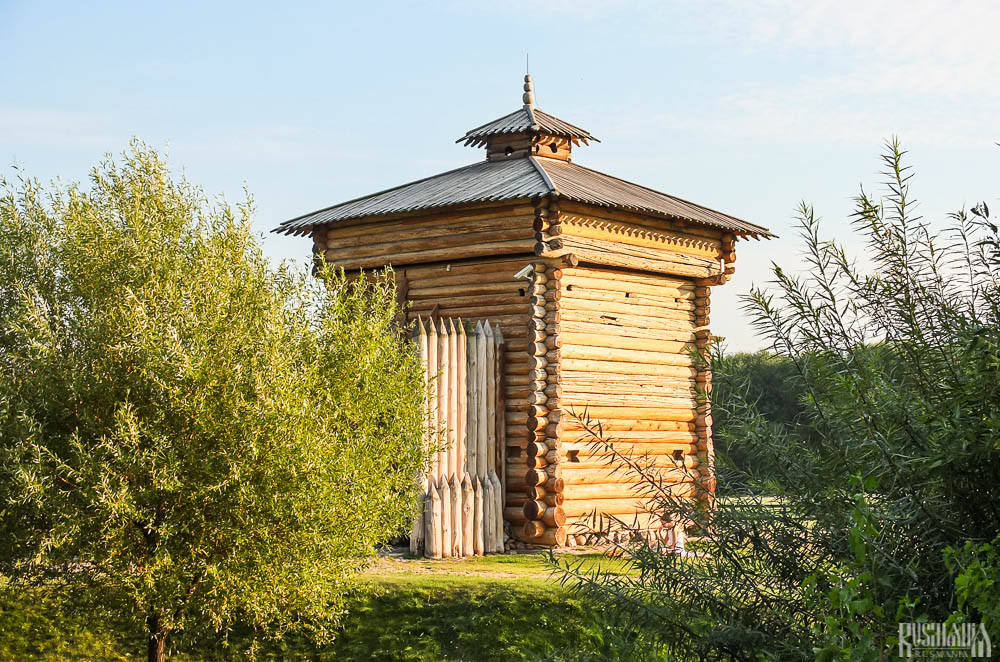
The third tower here is the Tower of the Bratsk Stockade which was built by Cossacks in 1631 on the bank of the River Angara in Siberia. A study of the stockade was carried out in the mid-20th century and in 1959 the north-western tower was relocated to Kolomenskoe. It was restored in 2007.
Watermill
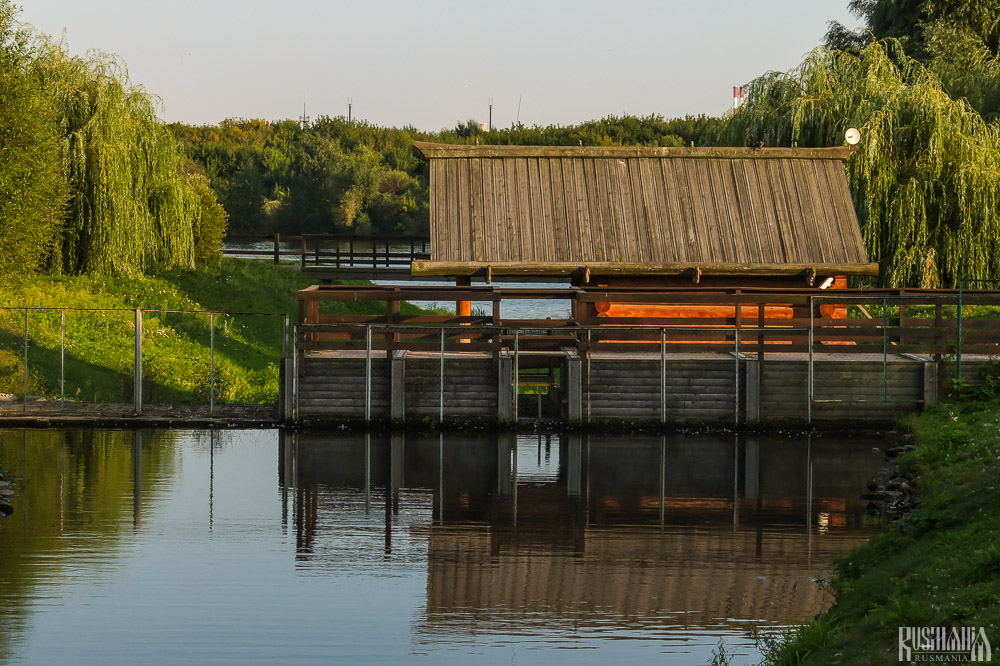
Slightly further east from these three towers on the Zhuzha stream is a Watermill. Unlike the other wooden structures here, the watermill is a recreation and was built in 2007 to replicate a traditional Russian watermill. The watermill is functioning and inside it has an exhibition on the process of making flour and the traditional equipment used is on display.
Falconry Yard of Tsar Alexis
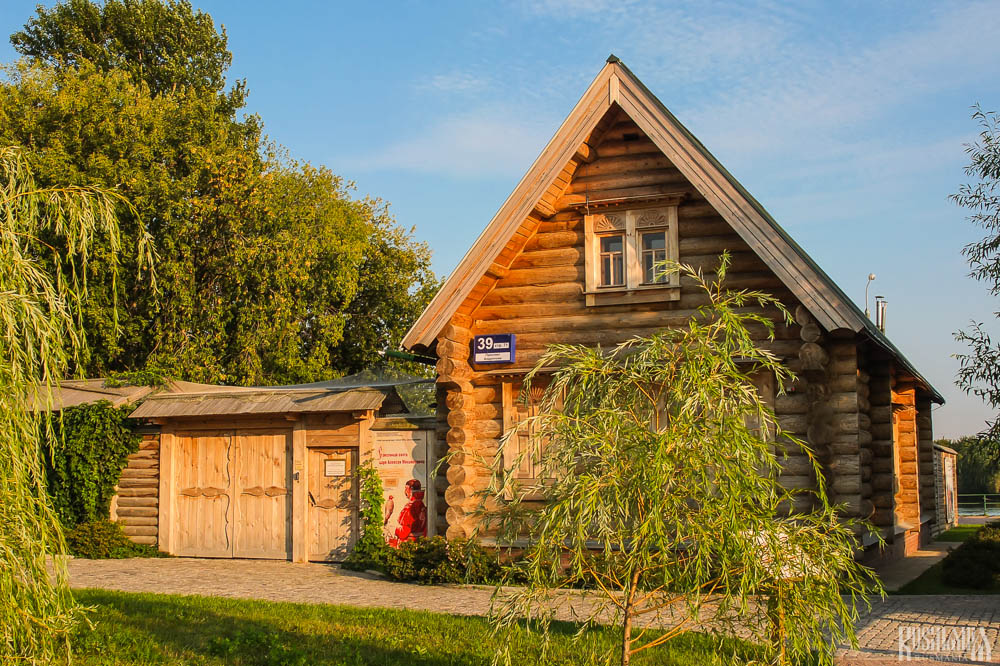
On the other side of the stream is another modern recreation. This is the Falconry Yard of Tsar Alexis which is dedicated to the tradition of hunting with falcons which was popular among the Russian grand princes and tsars. The yard was recreated using archival documents to replicate the type which would have been used by Tsar Alexis. It includes an exhibition on the history of falconry and falconry recreations are also held here in spring and summer.
St George's Wooden Church
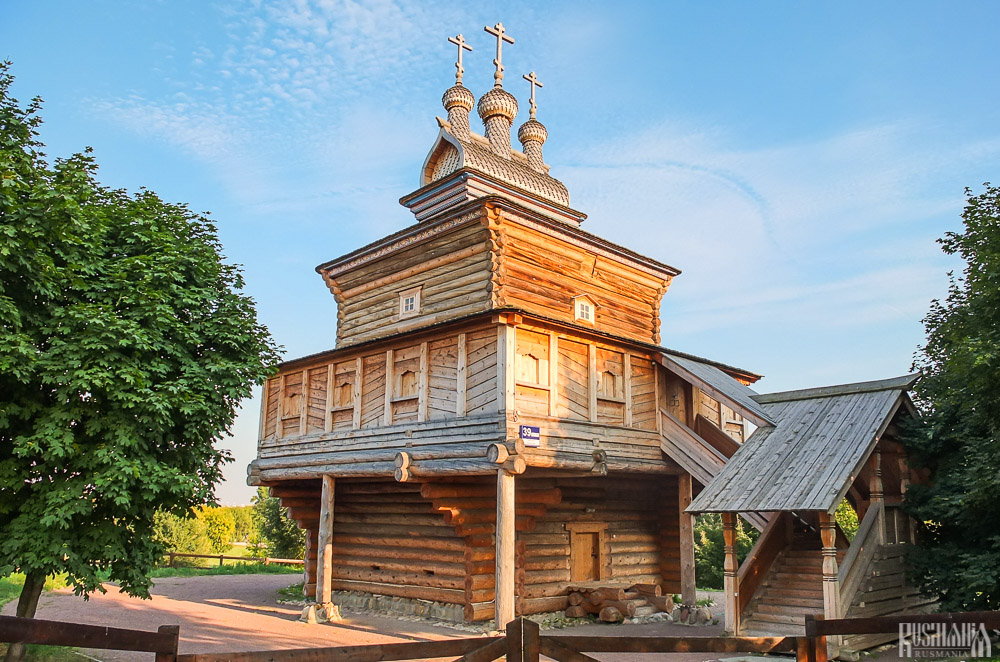
To the south of the three towers on Ulitsa Nizhnyaya is St George's Church which was built in 1685 on the bank of the River Yorga, a branch of the Northern Dvina, in North Russia. The church was closed after the Revolution and was allowed to fall into disrepair, along with the village where it stood. The church was relocated to Kolomenskoe in 2008.
Ethnographical Museum Complex
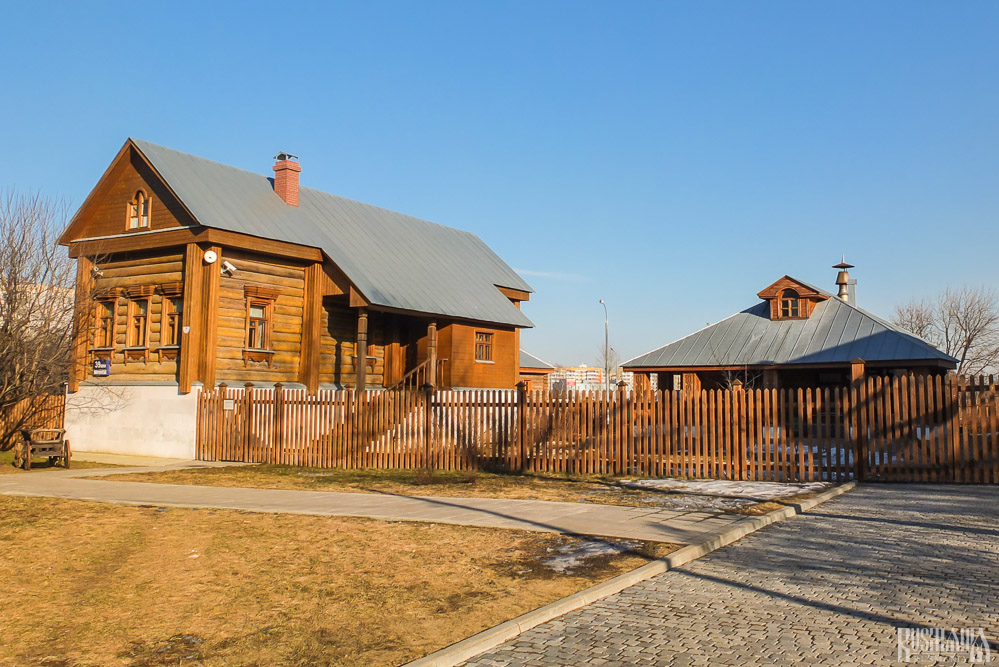
On Ulitsa Bolshaya not too far from the Saviour Back-Gates of the Tsar's Court there is a small wooden school building and then the estate's Ethnographical Museum Complex which comprises the Peasant's Farm and the Blacksmith's Yard. The Peasant's Farm includes recreations of a typical late-19th century peasant's house with a grain store, a stable, and a chicken coop, complete with a cow, a horse and some chickens. Just after the Peasant's Farm is the Smith's Yard. The recreation features the smith's houses, which display tools made by the smith, and an actual smith himself working at a brick furnace.
Tsar's Court
The estate's main attraction is the area between Ulitsa Bolshaya and Ulitsa Shtatnaya and the Kolomensky Stream which once comprised the Tsar's Court.
Saviour (Spasskie) Back-Gates
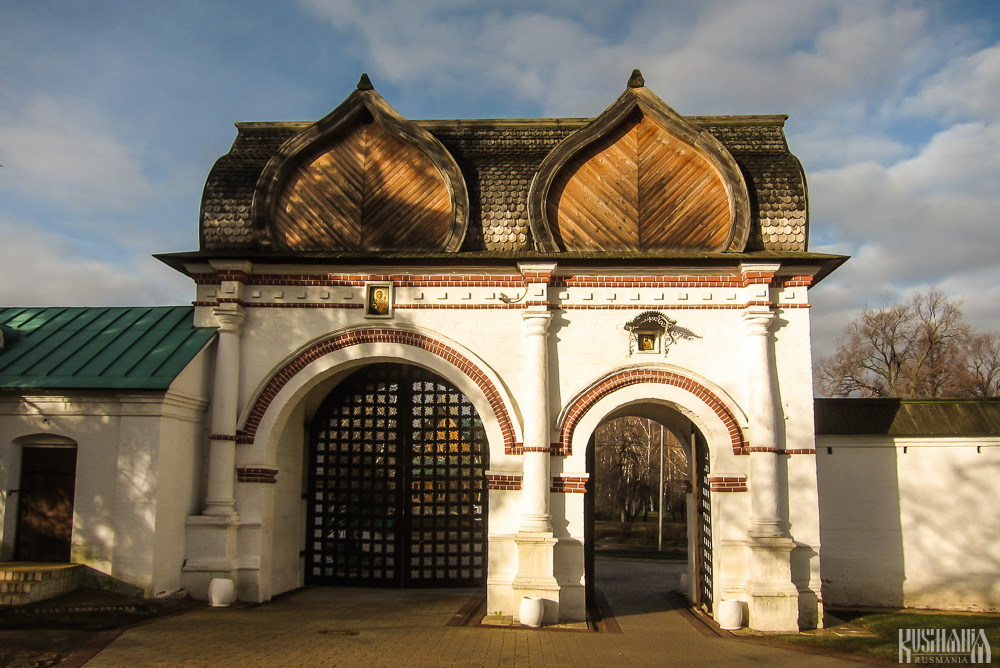
The Saviour Back-Gates served as the service entrance to the royal courtyard and the palace and were erected in 1673 and. The gates have two entrances: a wider one for carts and a narrower one for people. In the 1680s two premises were built onto the gates to house the sentries. These were demolished in 1814 but reconstructed in 2007. Also attached to the gates is part of the walls which once surrounded the whole courtyard.
Our Lady of Kazan Church
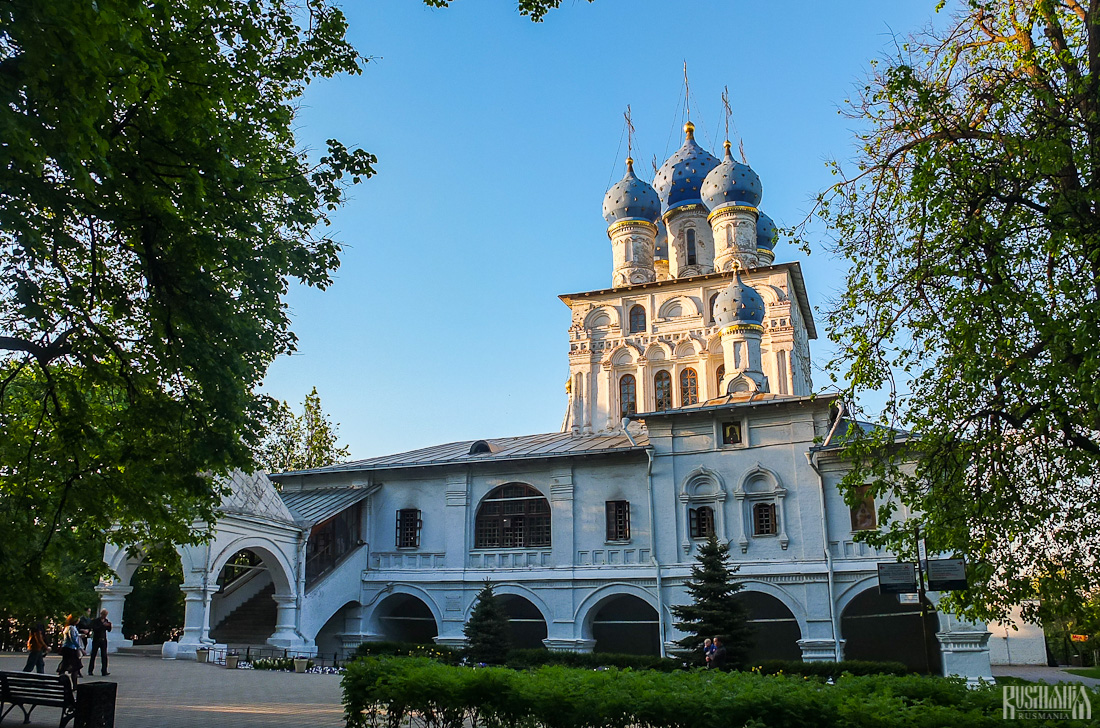
Just beyond the Saviour Back-Gates within the former royal court, is the Our Lady of Kazan Church which once served as the family church of the tsars. The church dates from 1651 replacing an earlier wooden version which was erected during the reign of Tsar Alexis. The church houses the Our Lady Sovereign Icon which was discovered in the church's basement after a peasant woman saw the icon and the church in a dream. On the very same day it was found in 1917, Emperor Nicholas II was forced to sign his act of abdication. It is known as the Our Lady Sovereign Icon as the Virgin Mary is sat on a throne with the infant Christ on her lap and holding a sceptre and an orb. Apart from a brief period of closure between 1941 and 1942, the church remained opened during the Soviet period. Behind the church are gardens known as the Kazansky Garden.
Foundations of Palace and Monuments
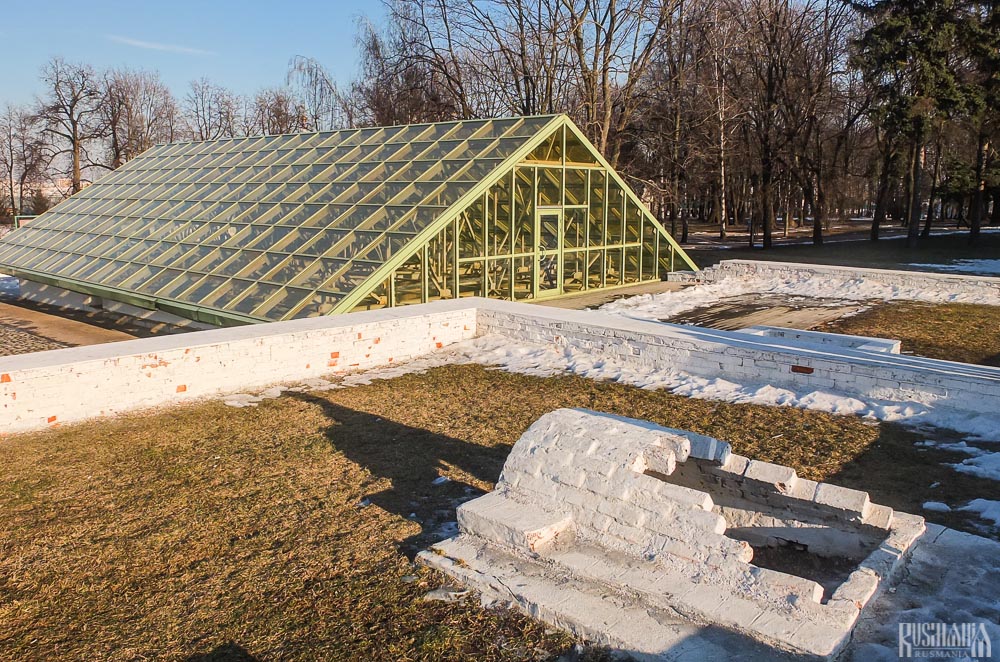
The original wooden palace of Tsar Alexis once stood to the south of the Our Lady of Kazan Church, and to the left of this area the foundations of the Food and Bread Chambers can still been seen. Also located here is a Monumental Pillar to the Liberation of the Serfs which was erected in the late 19th century and a 17th century Petition Pillar.
Front Gates Complex
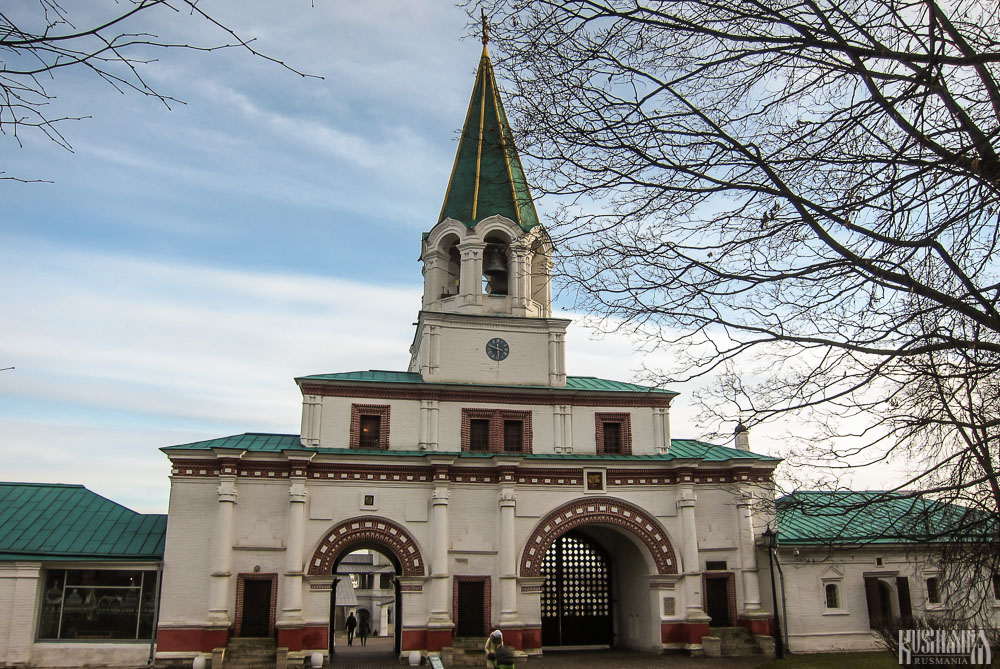
Opposite to the Spasskie Back-Gates is the Front Gates Complex which includes a bell tower and the buildings of the chancellery (prikaznie) chamber, the colonel's (polkovnichi) chamber, a vault, the culinary (povarennaya) chamber and the nourishment (sytny) building. The gates were built under the reign of Tsar Alexis in 1673 and served as the main entrance to the court; it was through here that the tsar and his family and guests would have entered the court.
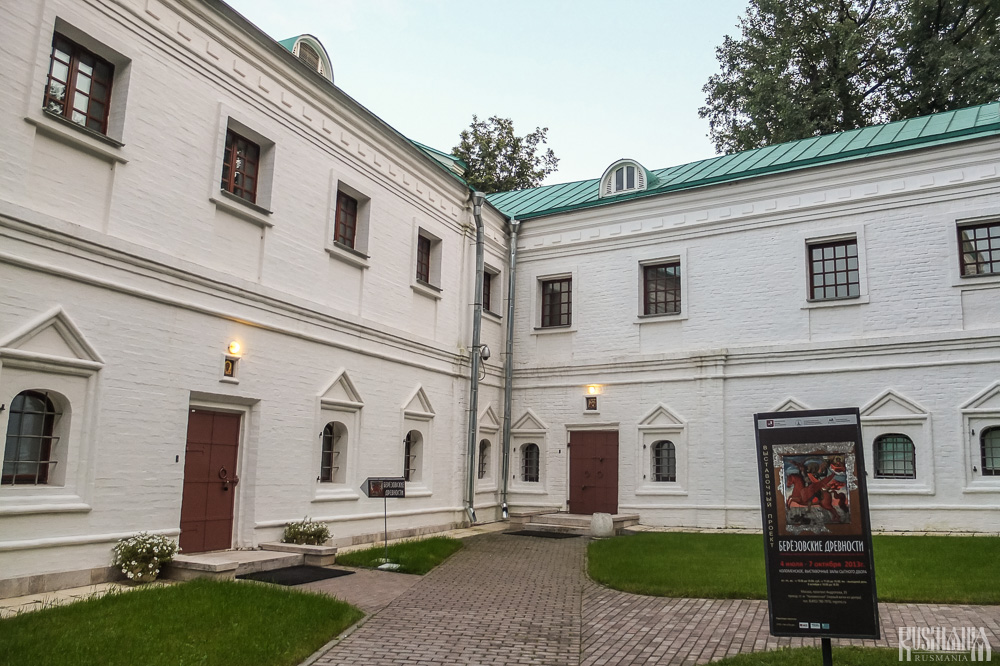
Today the complex houses the 'Milestones in History of Kolomenskoe' Exhibition which details the history of Kolomenskoe ranging from archaeological evidence of a stone-age settlement, the estate's peak as a royal residence (including a model of the original wooden palace) and then its decline as the capital moved to St Petersburg. The exhibition also includes examples of beautifully decorated icons, bibles and prayer books and other items used during worship. Temporary exhibitions are also held in this complex.
Voznesenskaya Ploschad
Just outside the Front Gates Complex of the Tsar's Court is an area known as Voznesenskaya Ploschad (Ascension Square) where Kolomenskoe's most famous sites can be found - the Ascension Church.
Ascension Church
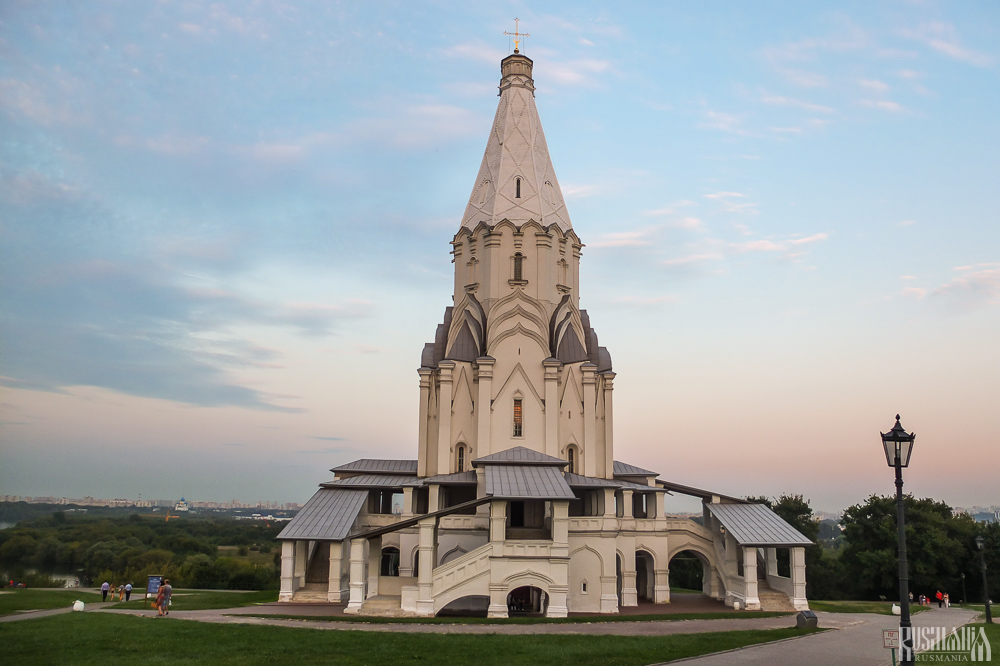
The Ascension Church is unique as it is the first Russian church to feature a tent-dome and represents a break with the traditional Byzantine architectural style and the beginning of a distinct Russian architectural style. The church was built between 1528 and 1532 on the orders of Grand Prince Vasili III to commemorate the birth of Vasili's long-awaited heir – the future Tsar Ivan the Terrible. Today the church is protected as a World Heritage Site as part of the White Monuments of Vladimir and Suzdal and now run as a museum. In addition to the interior of the church itself, there is also an exhibition entitled "Archaeology and Restoration of Ascension Church".
St George's Church
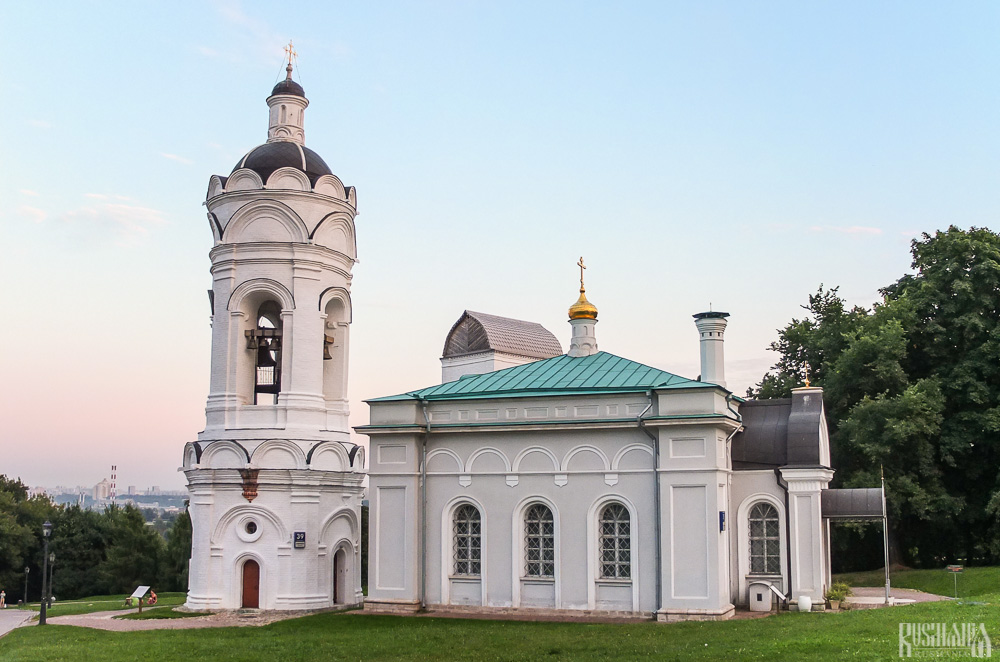
Standing next to the Ascension Church is St George's Church and its bell tower. In the 16th century a stone bell tower was built here for the Ascension Church. Later in the 17th century a wooden refectory was added to the bell tower and consecrated as St George's Church. According to legend a wooden church dedicated to St George previously stood here having been erected on the orders of Dmitri Donskoy in gratitude for his victory at Kulikovo Field. In the 19th century the wooden St George's Church was demolished and replaced with the current stone version. Today the church is used to hold temporary exhibitions.
Water Tower
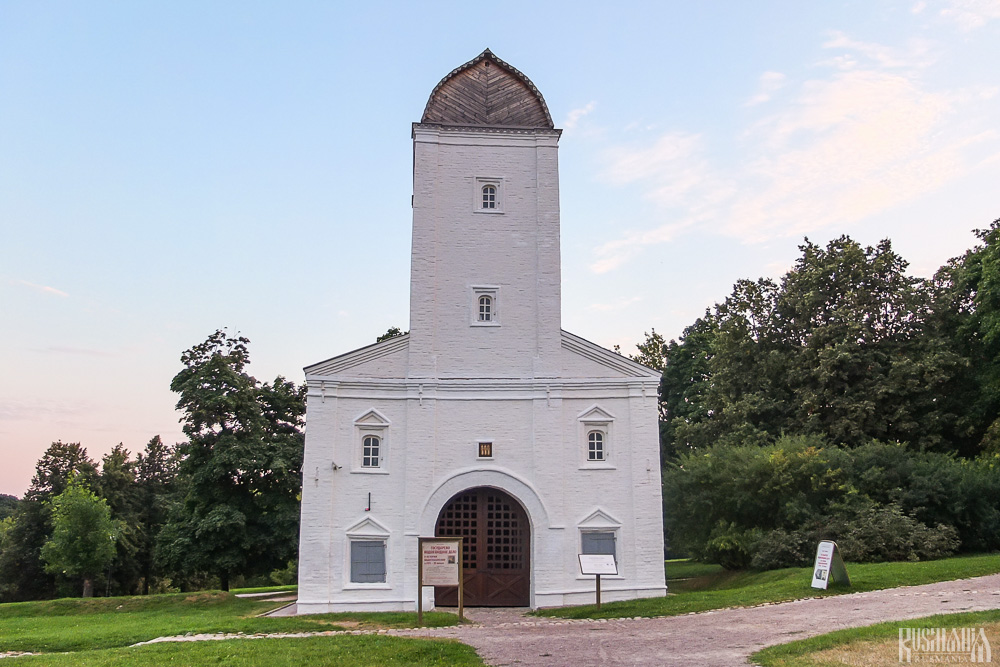
Next to St George's Church is a stone Water Tower which was built on the orders of Tsar Alexis in the 17th century to provide the royal court with a water supply. Restoration work has since taken place on the tower in the 18th, 20th and 21st centuries. Today the water tower is open as a museum and has two exhibitions: "The Water Supply System of the Tsar's Court" and "The History of Water Supply Techniques form the 12th to the 20th Century" which include a working model of how the water tower worked.
Palace Pavilion
The final structure in this part of the estate is the Palace Pavilion which represents the only surviving part of the palace of Emperor Alexander I. As a child, Alexander used to spend time in Kolomenskoe with his grandmother Catherine the Great and he ordered a palace be built here in 1825. However the emperor died shortly afterwards and never got to visit his new palace. In the 1870s the palace was demolished and only this pavilion remained. The pavilion's main feature is its façade which includes a small portico and statues of two lions. Today the pavilion is used to hold temporary exhibitions and for concerts of classical and folk music.
South of the Tsar's Court
Immediately south to the Tsar's Court Front Gate Complex are yet more interesting sights including a small copse of ancient oak trees, some of which are thought to be up to 600 years old.
Polovtsian Baba
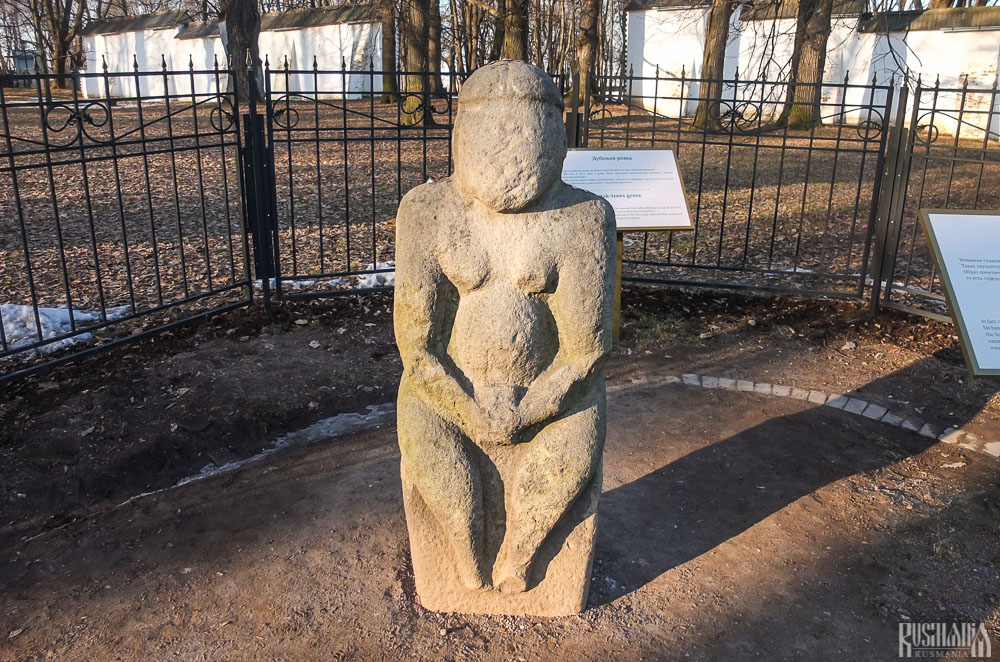
Among the oak trees is what is known as a Polovtsian Baba. It is a stone carving of figure though to represent ancestors and used for worship. It was created by the Turkic Polovtsy tribe sometime in the 11th or 12th century and was brought to Kolomenskoe in the 1930s.
Boris Stone
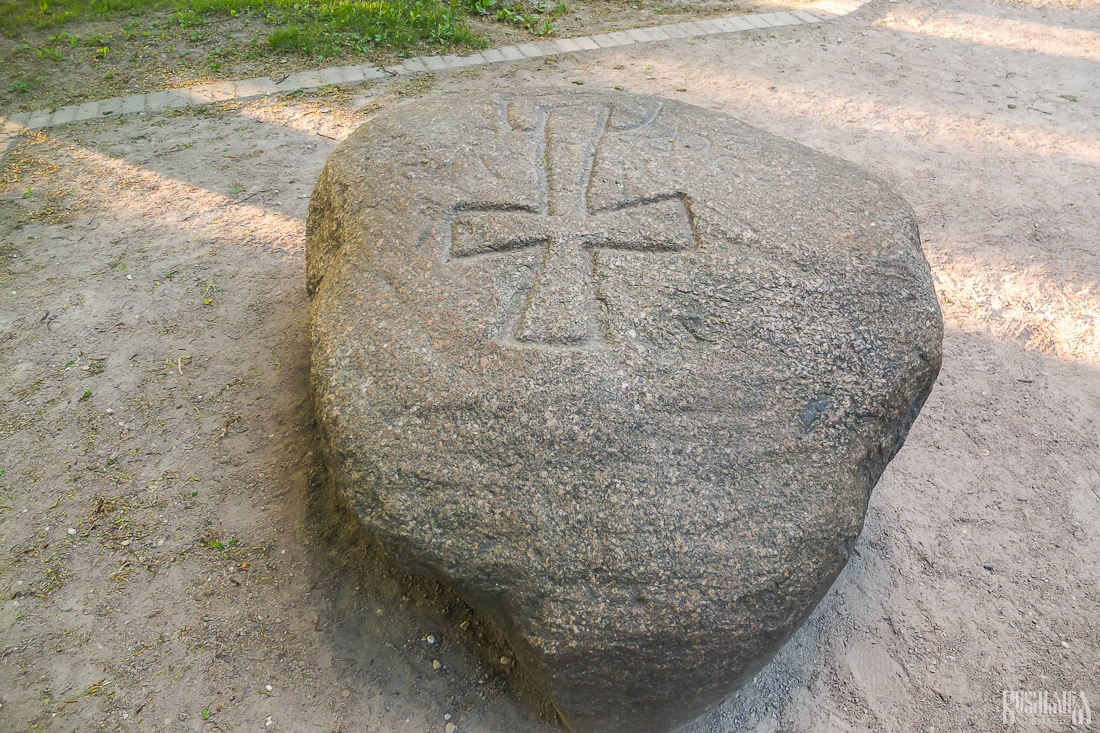
Slightly further along is a bolder which is one of the Boris Stones which are medieval artefacts dating from the 12th century. This particular stone was brought here from near Polotsk in Belarus, where they were originally thought to have been used to mark a boundary.
Peter the Great's House
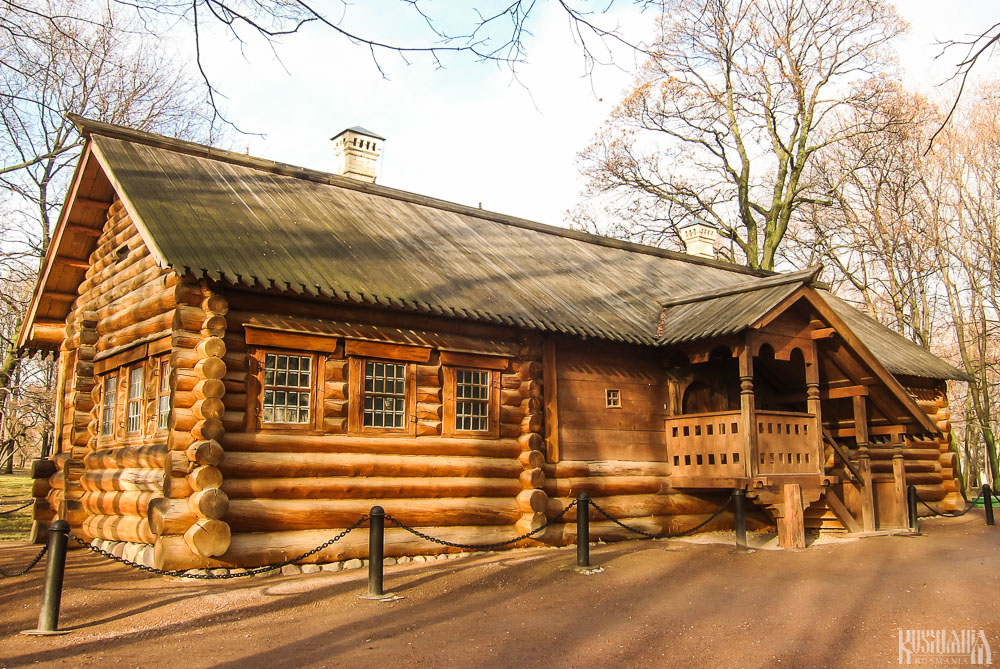
The wooden house just outside the Tsar’s Court is known as Peter the Great's House. It was originally built on an island in the mouth of the Northern Dvina River in 1702 for Peter the Great who lived there for two months whilst observing the construction of the Novodvinskaya Fortress to protect Arkhangelsk. In the 19th century the house was moved to Arkhangelsk and then in 1936 it was moved to its present location in Kolomenskoe - the birthplace of Peter the Great. The house now works as a museum dedicated to Peter the Great and entitled "Builder, Sailor and Hero". The interior has been recreated to how it would have looked during the time of Peter the Great and there are displays which detail the early life and interests of the tsar-reformer.
Beekeepers Estate and Gardens
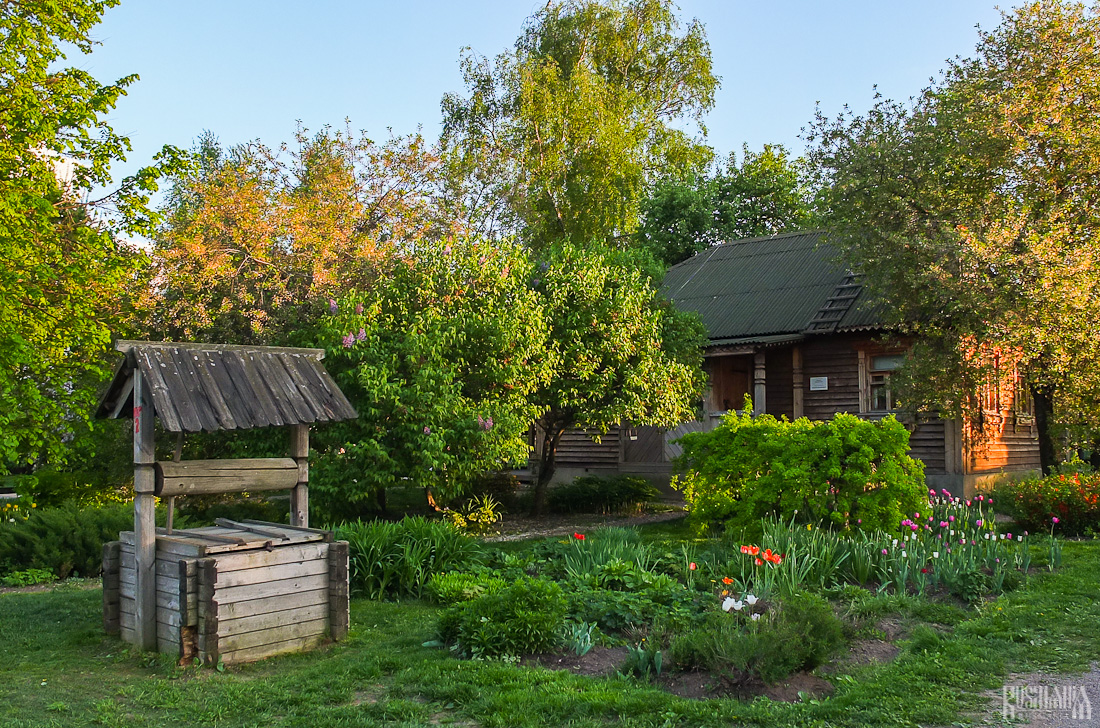
Further west is the Beekeepers Estate which now holds an exhibition on "Kolomenskoe Honey" which has two halls: one dedicated to the history of beekeeping and one a reconstruction of a 19th-century peasant hut in the Moscow Governorate. Just outside the estate is the Apothecary's Garden and the Voznesensky Garden.
Russian Riding Court
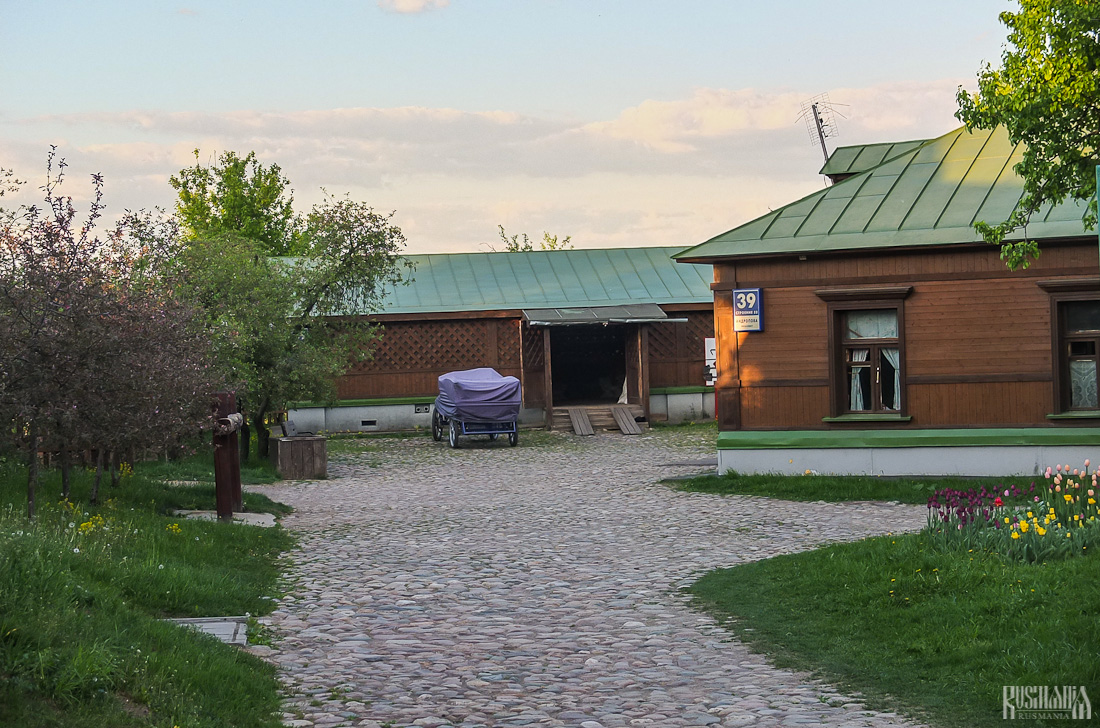
South of the Voznesensky Garden is a modern recreation of a traditional Russian Riding Court complete with stables, a groom's house, a coach house and a real blacksmith.
Dyakovo
Kolomenskoe Estate is cut in two by the Kolomensky stream which is located at the bottom of what is known as the Golosov Ravine. The part of Kolomenskoe located on the southern side of the ravine is known as Dyakovo after the village which was once located here.
Golosov Ravine
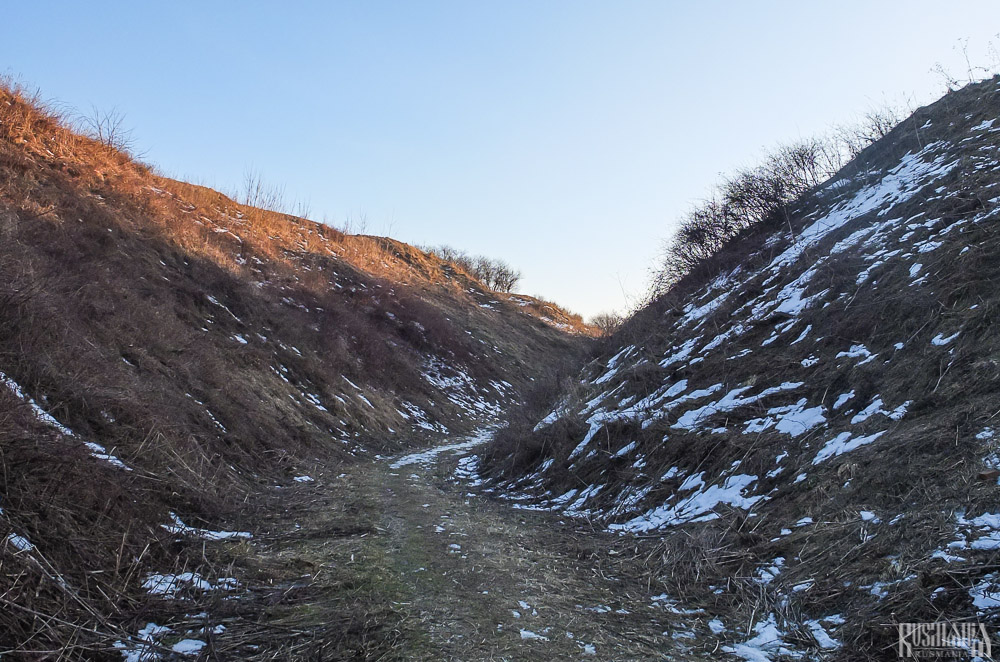
The Golosov Ravine itself is an interesting and mysterious place. It is believed there may have been a pagan shine dedicated to the god Veles here and there are many legends connected with the place. The most famous is that in 1621 Tsar Alexis' guards captured a small regiment of Tatars. When questioned, the Tatars said that they are part of Khan Devlet-Giray's forces and have just come from the ravine where there was a strange green mist. However Devlet-Giray attacked Moscow in 1571. The Tatars were even dressed in old-fashioned clothes with weapons of that time.
Maiden and Goose Boulders
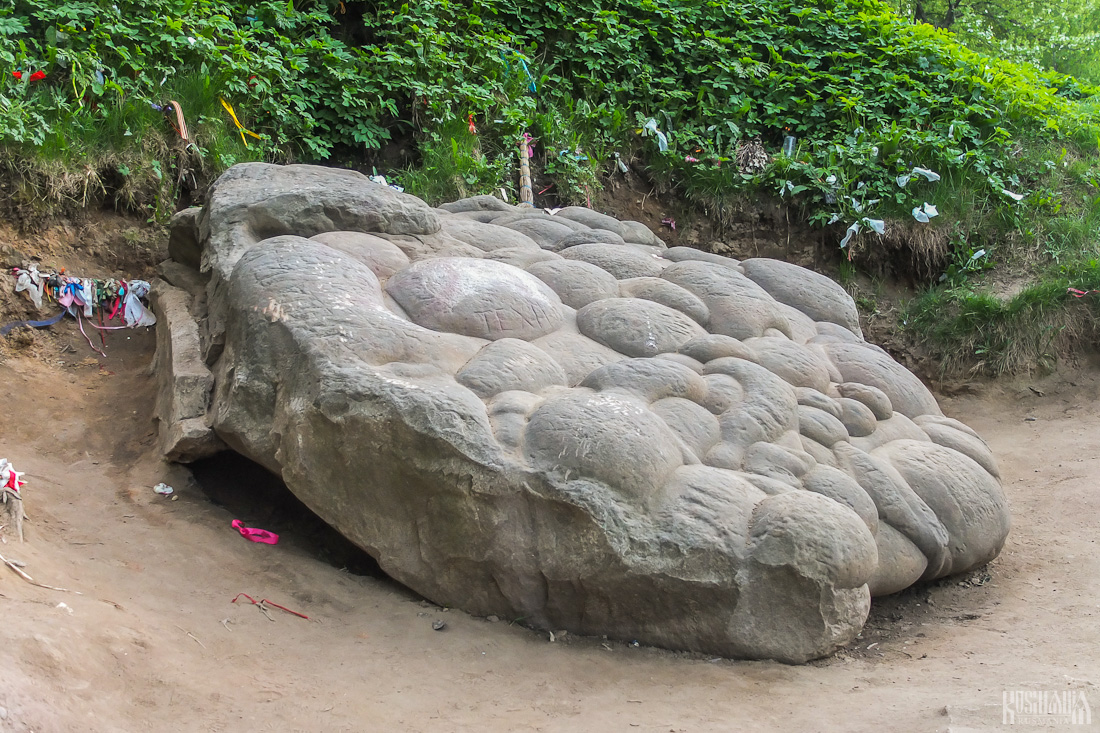
At the top of the ravine, close to the bridge back to the Riding Court, are two unusually shaped rocks which have come known as the Maiden (Devy) and Goose (Gus) Boulders and are said to aid fertility and cure a range of illnesses.
St John the Baptist Church in Dyakovo
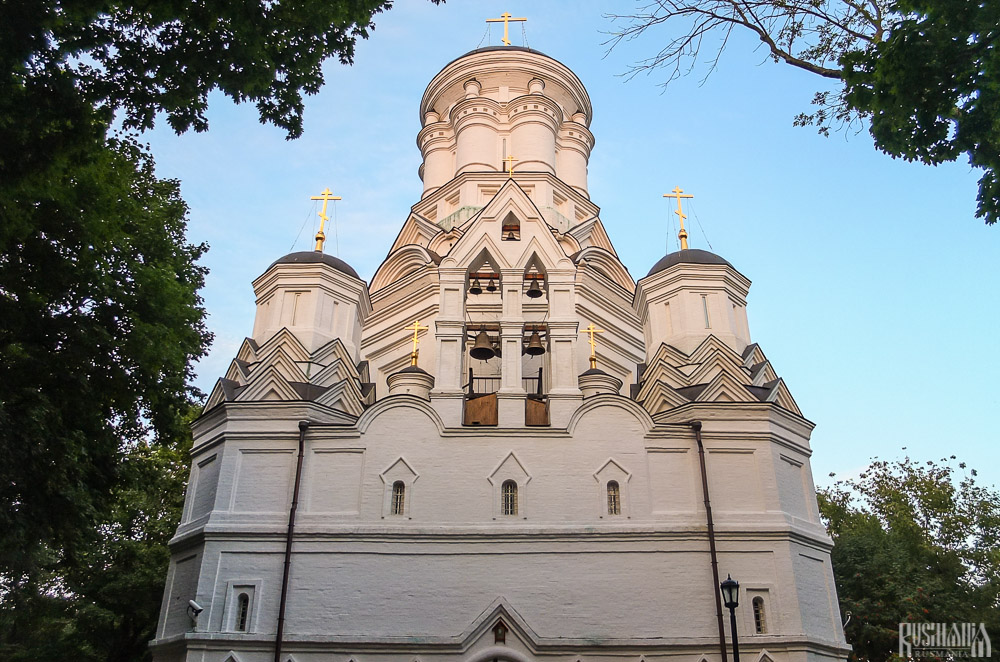
The main man-made sight in Dyakovo is the Beheading of St John the Baptist Church in Dyakovo. The church was built during the reign of Tsar Ivan the Terrible but the exact years of construction are unknown. It is believed that Ivan may have had it built to commemorate him becoming tsar in 1547. The church consists of five tent-domes: one larger central one with four smaller corner domes. In 1924 the church was closed, but was reopened once again from 1949 to 1957. After this it was closed once more and left to fall into disrepair. In 1971 the church's cemetery was closed and then destroyed in 1980. However in 1992 the church was returned to the Orthodox Church and by 2009 fully restored. Around the church is the Dyakovsky Garden.
Dyakovo Gorodische
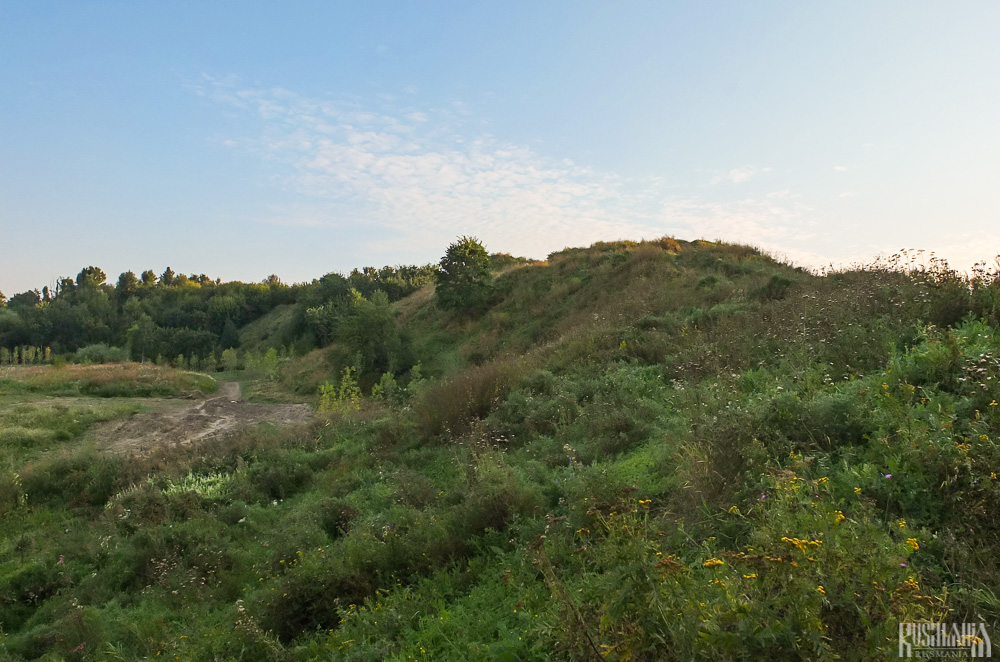
Further south, close to the River Moskva and next to the Dyakovsky Ravine, is the site of the Dyakovo Gorodische which archaeological digs have determined was the site of an Iron Age settlement. A whole range of Iron Age settlements around the Rivers Volga, Valdai and Oka were subsequently considered to be home of Dyakovo Culture which was named after this settlement in Kolomenskoe.
Chyortov Gorodok
A second site of a Dyakovo Culture settlement in the south-east of the estate is known as the Chyortov Gorodok (which can be translated as Demon's or Devil's Town) another site of an ancient settlement. There is also a natural spring here.
South of the Estate
Tsar Alexis' Palace
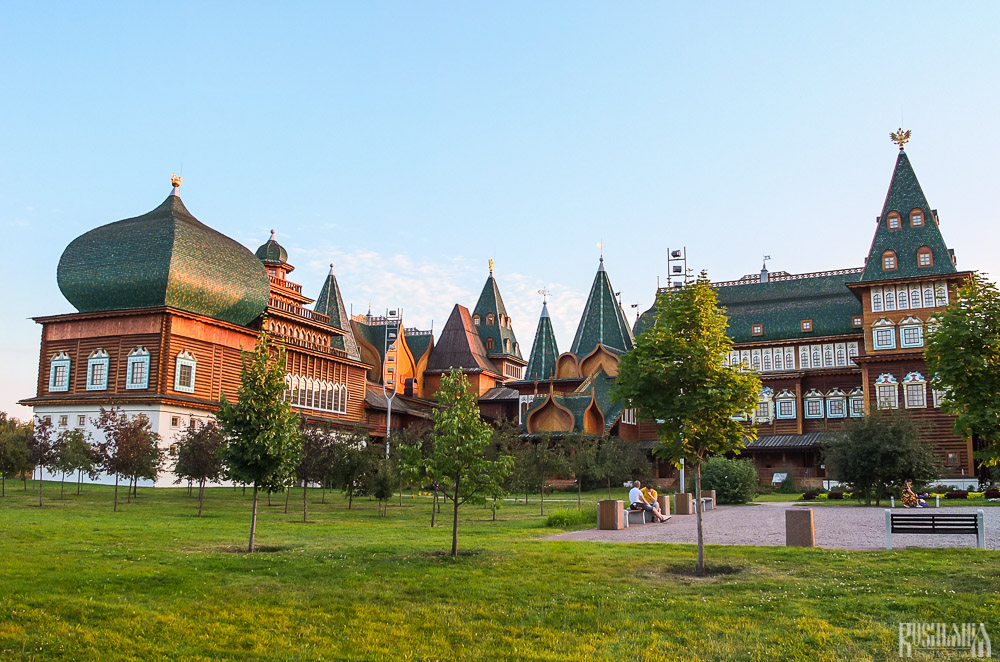
The final site within Kolomenskoe is the reconstruction of Tsar Alexis' Palace which is located in the very south of the estate close to Kashirskaya metro station. The original wooden palace was built in the Tsar’s Court at Kolomenskoe between 1667 and 1672, however by 1767 it was in ruins and Catherine the Great had it completely demolished. In the 1990s it was decided to have a recreation made and the southern part of the estate was selected so as not to disturb any of the real historical sites in the north. Old plans and other historical sources were referred to for both the exterior and interior of the palace and the recreation was completed in 2010.
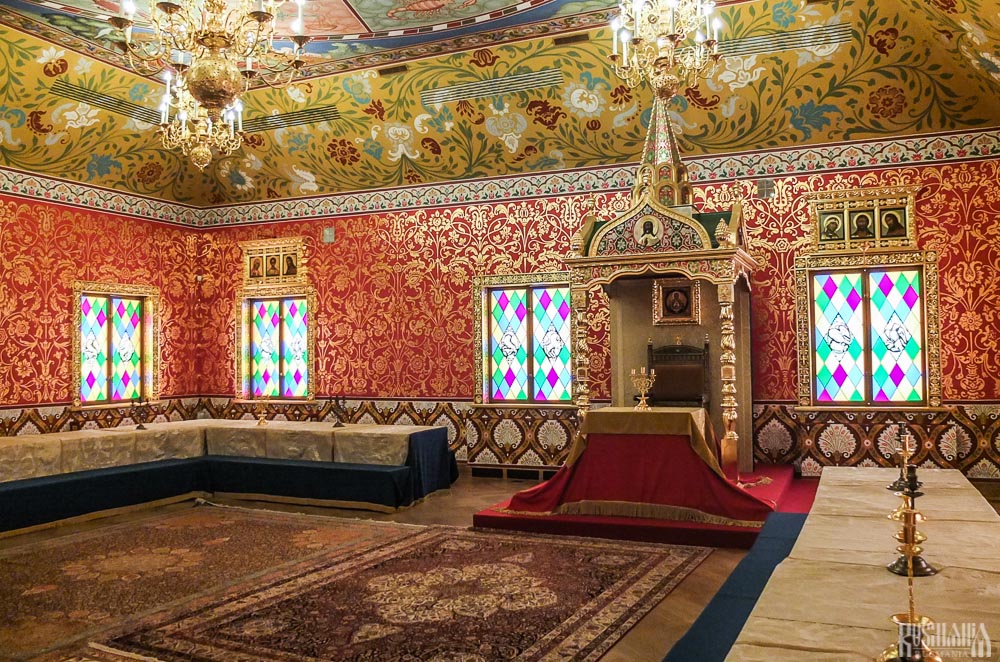
The palace is open to the public as a museum and its interiors are the main attraction. They are said to be faithful representations of how the original palace would have looked on the inside, but as impressive as they are you cannot escape the newness and modernity of it all. There is also an exhibition entitled "Treasures of Russian 17th-Century Art" which displays items, painting, engravings and handicrafts. In addition various temporary exhibitions are also held here.
| Location | Prospekt Andropova |
|---|---|
| Metro | Kolomenskaya, Kashirskaya |
| Website | http://mgomz.com |
| Clock | Museums: 10:00 - 18:00 (Saturdays: 11:00 - 19:00). Closed on Mondays |

